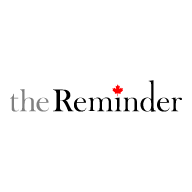In a former job, I spent several weekends working in our neighbouring First Nations communities of Pelican Narrows and Deschambault Lake.
People talk about Flin Flon being a friendly place. In my visits to those reserves, I found the folks to be even more hospitable, accommodating and good-natured.
They seemed content despite all of the tribulations surrounding them. And let’s not sugarcoat it: those tribulations are numerous.
Here’s how Maclean’s magazine summed up the situation facing Canada’s reserves, and Indigenous people, in a 2014 article:
“Half of First Nations children live in poverty, with rates reaching as high as 64 per cent of children in Manitoba and Saskatchewan. They are far more likely to grow up in communities racked with violence, live in overcrowded housing and lack access to clean drinking water. Nine of Canada’s 10 most violent communities are Aboriginal, according to Statistics Canada’s violent crime index, as are 92 of Canada’s 100 poorest communities.
“Deep poverty and domestic violence have pushed many Aboriginal youth toward a life of crime. Compared to non-Native Canadians, Aboriginal youth are seven times more likely to be victims of homicide, five times more likely to commit suicide and twice as likely to die an alcohol-related death. A rising number of Native teenagers are in custody: in 1997, just 12 per cent of young offenders in custody were Aboriginal. Today, it’s one in three.
“That’s if they make it to their teenage years at all. The infant mortality rate is double the Canadian average, and Native children are at higher risk of a wide array of serious health problems, from cavities in toddlers, to substance abuse, HIV infections, tuberculosis and chlamydia. Aboriginal girls are at greater risk of sexual assault, domestic violence and teenage pregnancies. The number of children taken from their homes by child welfare authorities now exceeds the number taken at the height of the residential-school era, says Cindy Blackstock, executive director of the First Nations Child and Family Caring Society. Aboriginal children are 10 times more likely to be placed in foster care than the Canadian average and make up half of the roughly 60,000 kids in care.”
These are serious problems that can’t be addressed by fashioning a fear-based gulf between “us” and “them,” as favoured by some people. And so many people turn to the government for solutions.
This election season, the plight of First Nations has been a talking point for politicians and aspiring politicians in northern Manitoba and Saskatchewan.
That plight is always a talking point for politicians, the reason being that no government has ever made the plight disappear. The Liberals couldn’t. The Conservatives couldn’t. The NDP wouldn’t.
Governments cannot fix broken homes or cure addictions. They cannot take an individual who feels hopeless or has no sense of purpose and bring hope and purpose to him. And they cannot develop economies on isolated reserves with few job prospects.
And let’s face it. The government hasn’t been able to bring safe drinking water – what should be a right for every Canadian – to all reserves. If such fundamentals aren’t even being covered, what hope is there the government can remedy more complex maladies?
In fairness, government does offer opportunities for people looking to leave the reserve and find a better way forward. Over the years, I have interviewed a number of such success stories. I found them inspiring.
We all want to see more success stories. None of us is quite sure how to get there, or if we will get there. I just know the government isn’t going to solve this problem, no matter what windbag politicians may promise.



